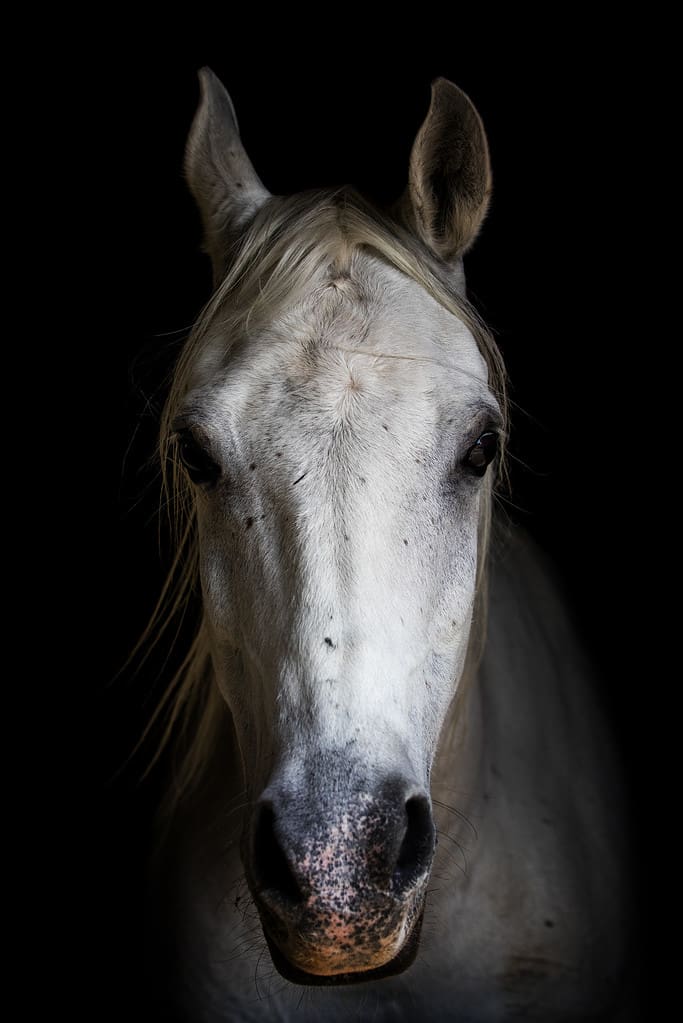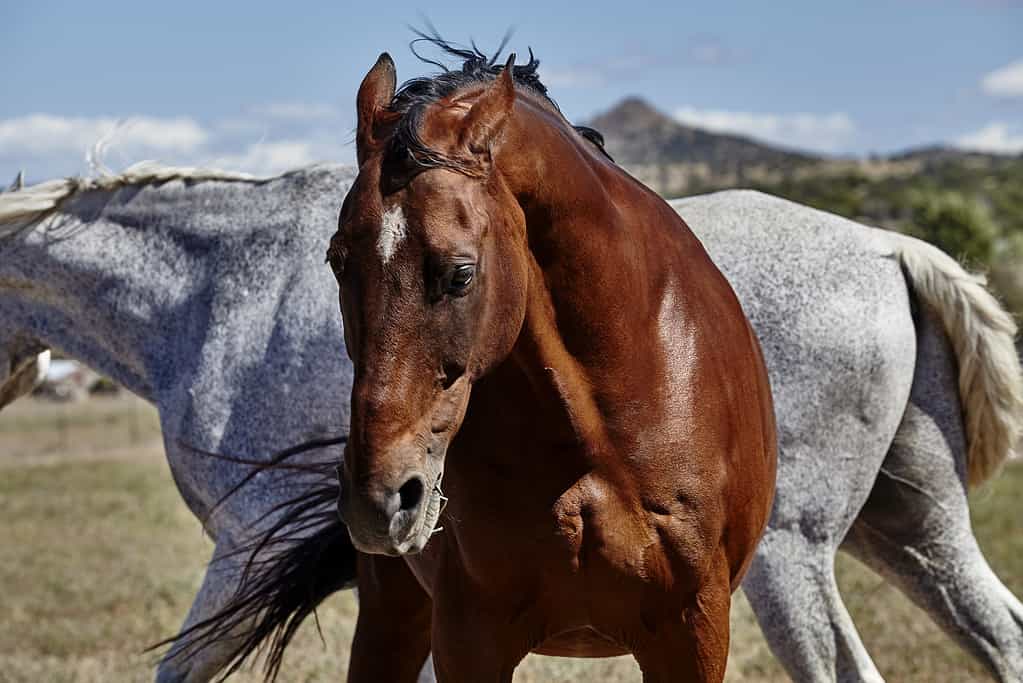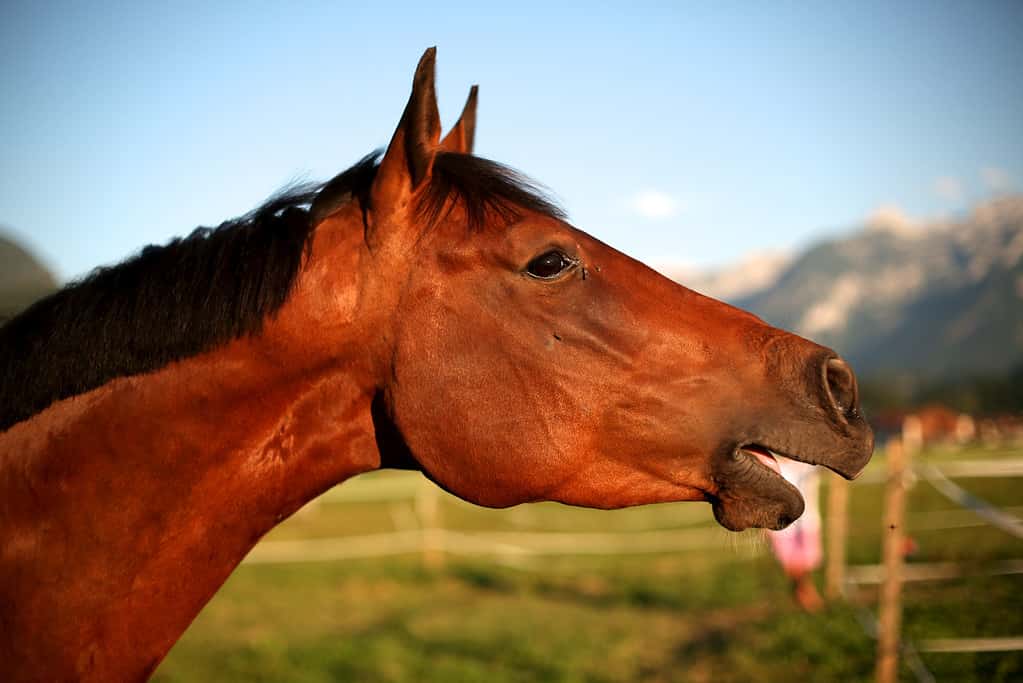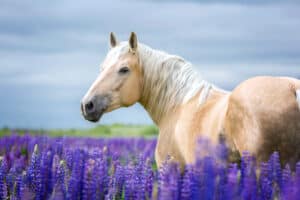Majestic, agile, and swift, horses are a well-loved, global symbol of athletic grace. And yet, for those unfamiliar with interacting with horses, these powerful animals are also viewed as quite intimidating and mysterious. While some of their body language is quite explosive, much of horse communication is expressed through subtler signals- slight changes in facial expressions, the flick of an ear, the barely perceptible shifting of weight, a tail swish, and so on. Being able to properly interpret their signals allows us to interact with horses in a safer, more ethical, and compassionate manner.
In this guide, we’ll delve into the intricacies of how horses communicate. Read on to learn more.
How Do Horses Communicate: Facial Expressions, Body Language, and Vocalizations
Highly intelligent and social animals, horses (Equus caballus) have developed a range of signals to express themselves and efficiently communicate with one another. To function cohesively in a tight-knit social group over decades, horses must be able to communicate their emotions, and intentions, and alert each other to possible danger through the use of both subtle and bold signals.
Facial Expressions
The expressive face of a horse features highly developed musculature capable of creating at least 17 distinct facial expressions through the use of 15 different facial muscles. In 2015, equine researchers created the Equine Facial Action Coding Systems (EquiFACS) to “provide a systemic methodology of identifying and coding facial expressions on the basis of underlying facial musculature and muscle movement”. In this study, researchers identified the 17 different facial expressions or action units that horses are capable of making as the following:
- Inner brow raise
- Eye closure
- Full blink
- Half blink
- Upper eyelid raise
- Upper lip raise
- Lip corner pull
- Sharp lip pull
- Nostril lift
- Lower lip depress
- Chin raise
- Lip pucker
- Upper lip curl
- Lip pressing
- Lip parting
- Jaw drop
- Mouth stretch
Interpretations of Facial Expressions
The ability to produce over a dozen facial expressions indicates that facial signaling is a crucial part of communication. The action unit of the upper lid raising, for example, results in the eye-widening with more white of the eye (sclera) visible. In many species, including horses, this facial expression often denotes fear. Since horses generally do not show the sclera of their eyes when at rest, an upper lid raise that exposes the sclera can communicate a change in emotion toward a negative valence.
As another example, lip parting can indicate a horse who feels calm or at rest. You can often observe horses napping while standing up or in a restful state with their lips slightly parted. The lower lip is often quite heavy-looking in appearance. This expression is typically accompanied by a lowered head, half-closed eyes, and ears that point slightly outward.
The ability to lift their nostrils is often used by horses to express alarm. In bands, horses can signal possible danger to each other by sharply blowing air out of their nostrils. This often results in a snorting or trumpet-like noise. This expression is often paired with widened eyes, alert ears, and a tense body stance.
Horses are capable of several, distinct, fine muscle movements of their lips. One such movement is the lip corner pull. This movement pulls the lip corners back in a manner that typically results in wrinkling around the mouth. This expression can often indicate stress or concern by the horse. You may also notice wrinkling appearing above the eyes.

Horses are capable of making 17 distinct facial expressions.
©Arghman/iStock via Getty Images
Implications for Equine Welfare
In recent years, researchers have been focusing on better understanding and interpreting the facial expressions of horses to improve their welfare. This is especially important for the ridden horse as modern research reveals that a vast number of horses suffer from physical and psychological pain while being ridden which trainers and riders often don’t interpret as such.
Body Language
In addition to their capability of complex facial expressions, horses can also express a range of emotions and intentions through body language. Some of these expression are quite subtle. For example, a flick of one ear toward a sound paired with a slight shift away from the noise and tense body posture can indicate that the horse is concerned. This subtle signal can alert other horses to pay attention to possible danger in the direction of the noise. However, it isn’t an all-out confirmation of danger and a signal to flee.
Horses can also use body language to signal social affection and closeness. Horses who are friends will often rest with their faces touching or heads resting on each other’s necks. They may also stand parallel facing opposite directions. This allows them to look out for one another and use their tails to swish flies off each other’s faces.
Body Language and Conflict
Body language communication is crucial to ensuring a cohesive social group. If a horse is irritated with a member of its social group, it’s far better to signal this annoyance with body language rather than initiate a direct conflict. Outright physical conflicts vastly increase the risk of injuries. It can also damage long-term social relations, which ultimately can decrease group and individual survival. As such, horses can indicate varying levels of annoyance, and frustration, or communicate a need for space before resorting to outright fighting.
For example, when a horse pins their ears flat against their head toward another member of their group, this is a sign of displeasure and often a signal for increased distance. This may also be an attempt on the horse’s part to move the other horse away from a desired resource. In domesticated horses, you may see individuals attempting to move others away from resources such as hay piles with the use of pinned ears, bluff charging, tail swishing, and swinging their hind end toward the other horse. However, frequent demonstrations of this behavior indicate that the human caregiver needs to change how the resources are distributed. In that instance, the hay piles likely need to be spread further apart with more piles present than the number of horses. In feral horse bands, this type of expressing frustration and conflict over resources does not occur as often because of increased space, autonomy, and often more cohesive social dynamics.

The body language of the bay-colored horse expresses agitation. The ears are pinned, the tail is swishing, and there is tension in the face and neck.
©wingedwolf/iStock via Getty Images
How Horses Communicate: Vocalizations
In addition to facial expressions and body language, horses also use vocalizations to communicate to each other. While vocalizations are not used as frequently as body and facial communication, there is a range of sounds horses will make to signal to each other and express emotions. These vocalizations, specifically induced through the use of the larynx, include the following:
- Whinny
- Neigh
- Squeal
- Grunt
- Scream
- Groan
- Nicker
These vocalizations can express excitement or anticipation, fear, delight, anxiety, playfulness, alarm, indignation, and so on.
When horses first meet each other, for example, they often squeal as part of the initial greeting. This high-pitched squeal is typically accompanied by nose touching and nostril blowing, pawing or striking of the front leg, arched necks, and prancing. In this instance, the squealing typically indicates an excited state. Squealing can also be used to express indignation and as part of a threat display. Horses will scream when in acute distress. This can be an expression of acute terror and a signal to other horses to flee from immediate danger.
A nicker, which describes a low-pitched, guttural, and pulsating vocalization, typically expresses pleasurable anticipation. Domesticated horses often nicker before feeding time or when they see a favorite human or other horse. A whinny is similar to a nicker but high-pitched and much louder. This vocalization can indicate a greeting, express playfulness, and can be used to locate and call to other members of the group. A neigh has less of a trill or high pitch than a whinny. It is typically used for call and response to locate each other.

This horse is neighing with an alert expression on the face and forward, alert ears. Likely, they are calling to another member of their social group.
©mhaidbauer/iStock via Getty Images
The photo featured at the top of this post is © Wirestock/iStock via Getty Images
Thank you for reading! Have some feedback for us? Contact the AZ Animals editorial team.







